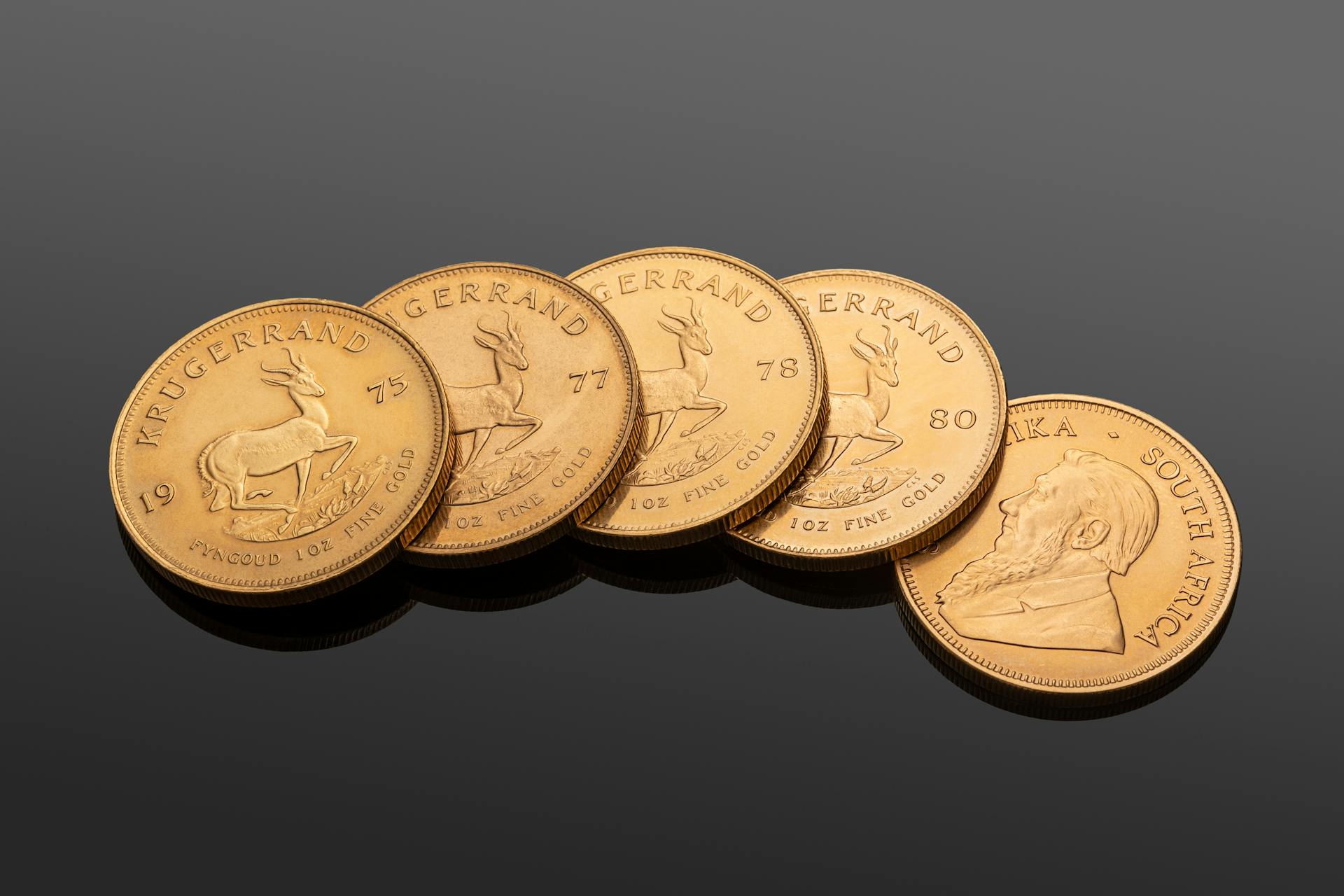
The FCFA currency is the official currency of several countries in West and Central Africa, including Cameroon, the Central African Republic, Chad, the Republic of the Congo, Equatorial Guinea, and Gabon.
It's pegged to the Euro at a fixed exchange rate of 655.957 CFA francs to 1 Euro.
In other words, the value of the FCFA is tied to the value of the Euro, which affects its exchange rate.
The FCFA is divided into 100 centimes, but centimes are no longer in circulation.
What Is FCFA?
The FCFA, or West African CFA franc, is a regional African currency backed by the French treasury with pegging to the euro. It's often used interchangeably with the Central African CFA franc, but technically they're separate currencies.
The FCFA is one of two regional African currencies, the other being the Central African CFA franc, and both are officially recognized as the official currency of several member nations. The abbreviation for the FCFA is XOF in currency markets.
The CFA franc zone is made up of two independent unions: the West African Economic and Monetary Union and the Central Africa Economic and Monetary Community. The dual union has helped cement the value and usability of the CFA franc.
The FCFA was created by France in 1945 and pegged to the French franc, which later became the euro. Today, the currency trades at 100 CFA francs to 0.152449 euro or, put another way, one euro equals 655.96 CFA francs.
The French treasury controls 50% of the foreign exchange reserves of all 14 CFA franc using countries, giving them a significant level of control over the currency's value.
Usage and Exchange
The CFA franc is used in fourteen countries, with a combined population of 210.4 million people and a combined GDP of US$313.7 billion as of 2023.
These countries include twelve nations formerly ruled by France in West and Central Africa, plus Guinea-Bissau and Equatorial Guinea.
The CFA franc was created with a fixed exchange rate versus the French franc, which was changed only twice, in 1948 and in 1994.
Here are the exchange rates from 1945 to 1999:
- 26 December 1945 to 16 October 1948 – F.CFA 1 = 1.70 French franc.
- 17 October 1948 to 31 December 1959 – F.CFA 1 = 2 French francs.
- 1 January 1960 to 11 January 1994– F.CFA 1 = NF 0.02.
- 12 January 1994 to 31 December 1998– F.CFA 1 = F 0.01.
- 1 January 1999 onwards – F.CFA 100 = €0.152449 or €1 = F.CFA 655.957.
The CFA franc can be exchanged for various currencies, including the British Pound, Australian Dollar, Euro, and more. Here are some popular exchange rates:
Sending and Converting
If you're planning to send West African CFA Francs to another country, it's essential to know the conversion rates beforehand.
You can send West African CFA Francs to the UK and get 0.001 British Pounds in return for every 1 West African CFA Franc.
To give you a better idea, here are some popular conversion rates for West African CFA Francs:
These conversion rates can change over time, so it's always a good idea to check the current rates before making any transactions.
Key Information
The CFA franc is a widely accepted currency in West and Central Africa, and here are some key facts to keep in mind.
The CFA franc is pegged to the euro, with one euro equaling 655.96 CFA francs.
The CFA franc is used in 14 member countries, with six countries using the Central African CFA franc (XAF) and eight countries using the West African CFA franc (XOF).
Here are the official currencies of the regions, summarized in a table:
Debate and Criticism
The CFA franc has been criticized for making national monetary policy for developing countries in French West Africa all but impossible.
Critics argue that the currency is controlled by the French treasury, and African countries channel more money to France than they receive in aid, with no sovereignty over their monetary policies.
The European Union's 2008 assessment noted that benefits from economic integration within the CFA franc zone remained remarkably low, but that the peg to the euro had favourable effects in terms of macroeconomic stability.
Italian ministers accused France of impoverishing Africa through the CFA franc in January 2019, and criticism continued from various African organizations.
President Alassane Ouattara of the Ivory Coast and President Emmanuel Macron of France announced an initiative to replace the West African CFA Franc with the Eco in December 2019, marking a significant step towards reform.
The French National Assembly agreed to end French engagement in the West African CFA franc in May 2020, a move that will no longer require countries using the currency to deposit half of their foreign exchange reserves with the French Treasury.
The Economic Community of West African States (ECOWAS) plans to introduce its own common currency, the Eco, for its member states by 2027.
Central Africa and EU
The Central African CFA franc is used by six countries in Central Africa, which also happens to be a region with a significant economic presence in the continent.
These countries include Cameroon, Central African Republic, Chad, Equatorial Guinea, Gabon, and Republic of the Congo.
The six countries using the CFA franc have a combined population of 62.8 million people and a combined GDP of US$114.3 billion, as of 2023.
Equatorial Guinea, the only former Spanish colony in the region, adopted the CFA franc in 1984, marking a significant shift towards economic integration in the area.
Central Africa
The Central African region is home to a unique currency, the Central African CFA franc (XAF). It's issued by the BEAC, located in Yaoundé, Cameroon, for six countries in the CEMAC community.
These countries are: Cameroon, Central African Republic, Chad, Equatorial Guinea, Gabon, and Republic of the Congo. The combined population of these six countries is a staggering 62.8 million people, as of 2023.
The CFA franc has a common reverse, similar to euro coins, with unique obverses for each participating country. This was introduced in 1975.
The six countries using the CFA franc have a combined GDP of US$114.3 billion, as of 2023.
Here's a list of the six countries using the CFA franc:
- Cameroon
- Central African Republic
- Chad
- Equatorial Guinea
- Gabon
- Republic of the Congo
European Monetary Union
The European Monetary Union had a significant impact on the relationship between the European Union and the CFA Zone, including Central Africa. In 1998, the Council of the European Union addressed the monetary agreements France had with the CFA Zone and Comoros.
The agreements were deemed unlikely to have any material effect on the monetary and exchange rate policy of the Eurozone, and they wouldn't present any obstacle to a smooth functioning of economic and monetary union. This was a key consideration as the European Union was moving towards Economic and Monetary Union.
The French Treasury guaranteed the free convertibility at a fixed parity between the euro and the CFA and Comorian francs. This ensured stability in international trade with the Eurozone.
Any change to the nature or scope of the agreements would require Council approval on the basis of a Commission recommendation and ECB consultation. This was a safeguard to ensure that any modifications would not compromise the stability of the Eurozone.
Here are the key points from the Council's ruling:
- The agreements are unlikely to have any material effect on the monetary and exchange rate policy of the Eurozone.
- In their present forms and states of implementation, the agreements are unlikely to present any obstacle to a smooth functioning of economic and monetary union.
- The French Treasury will guarantee the free convertibility at a fixed parity between the euro and the CFA and Comorian francs.
- Any change to the nature or scope of the agreements would require Council approval on the basis of a Commission recommendation and ECB consultation.
Exchange Rate and History
The West African CFA Franc (XOF) has a rich history that dates back to 1945, following the end of World War II. The currency was introduced to replace the French West African franc and was pegged to the French franc.
The initial exchange rate in 1945 was 1 CFA franc to 1.70 French francs, which was a 70 centime premium to spare the French African colonies the devaluation of the French franc. This premium was the result of the creation of the CFA franc.
The exchange rate was changed to 1 CFA franc to 2 French francs in 1948, following the devaluation of the French franc. This change had a significant impact on the economy of the countries in the CFA franc zone, leading to economic stagnation in the 1980s and early 1990s.
In 1994, the CFA franc was devalued by 50%, which, along with other fiscal and monetary policy adjustments, generated GDP growth of 5% in the CFA franc zone between 1995 and 2000.
Here's a summary of the exchange rate changes:
The CFA franc was pegged to the euro in 1999, with a fixed exchange rate of 100 CFA franc to 0.152449 euro. This exchange rate has remained relatively stable over the years, with the current exchange rate being 1 West African CFA Franc to 0.0016 US Dollar.
Featured Images: pexels.com


